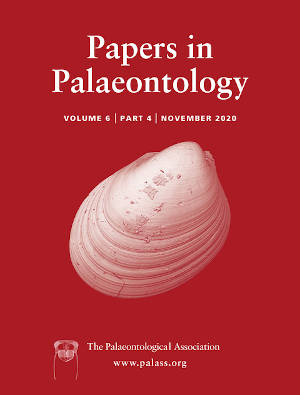Reg. Charity No. 1168330

‘Microsaurs’ are traditionally considered to be lepospondyl non‐amniotes, but recent analyses have recovered a subset of ‘microsaurs’, the fossorially adapted Recumbirostra, within Amniota. This novel conclusion highlights the need for additional work to evaluate these competing hypotheses with the aim of refining the phylogenetic position of ‘microsaurs’. Of particular importance in this regard is the placement of potential close relatives of recumbirostrans to determine whether they support an early, stepwise acquisition of the derived morphology seen in recumbirostrans for a fossorial lifestyle, or whether this morphology is the result of evolutionary convergence. Asaphestera intermedia is part of a diverse ‘microsaur’ assemblage preserved at the famous Pennsylvanian Joggins locality in Nova Scotia, Canada. As part of a broader exploration of ‘microsaur’ taxonomy, we find that the material assigned to this taxon is a composite of a synapsid (herein Asaphestera platyris), indeterminate tetrapod material named ‘Hylerpeton’ intermedium (a nomen dubium not referable to Hylerpeton), and the newly recognized recumbirostran Steenerpeton silvae gen. et sp. nov. Further, Archerpeton anthracos from the same site must at present be considered a nomen dubium and may or may not be a ‘microsaur’. Recognition of Asaphestera platyris as a synapsid provides the earliest unambiguous evidence of ‘mammal‐like reptiles’ in the fossil record.